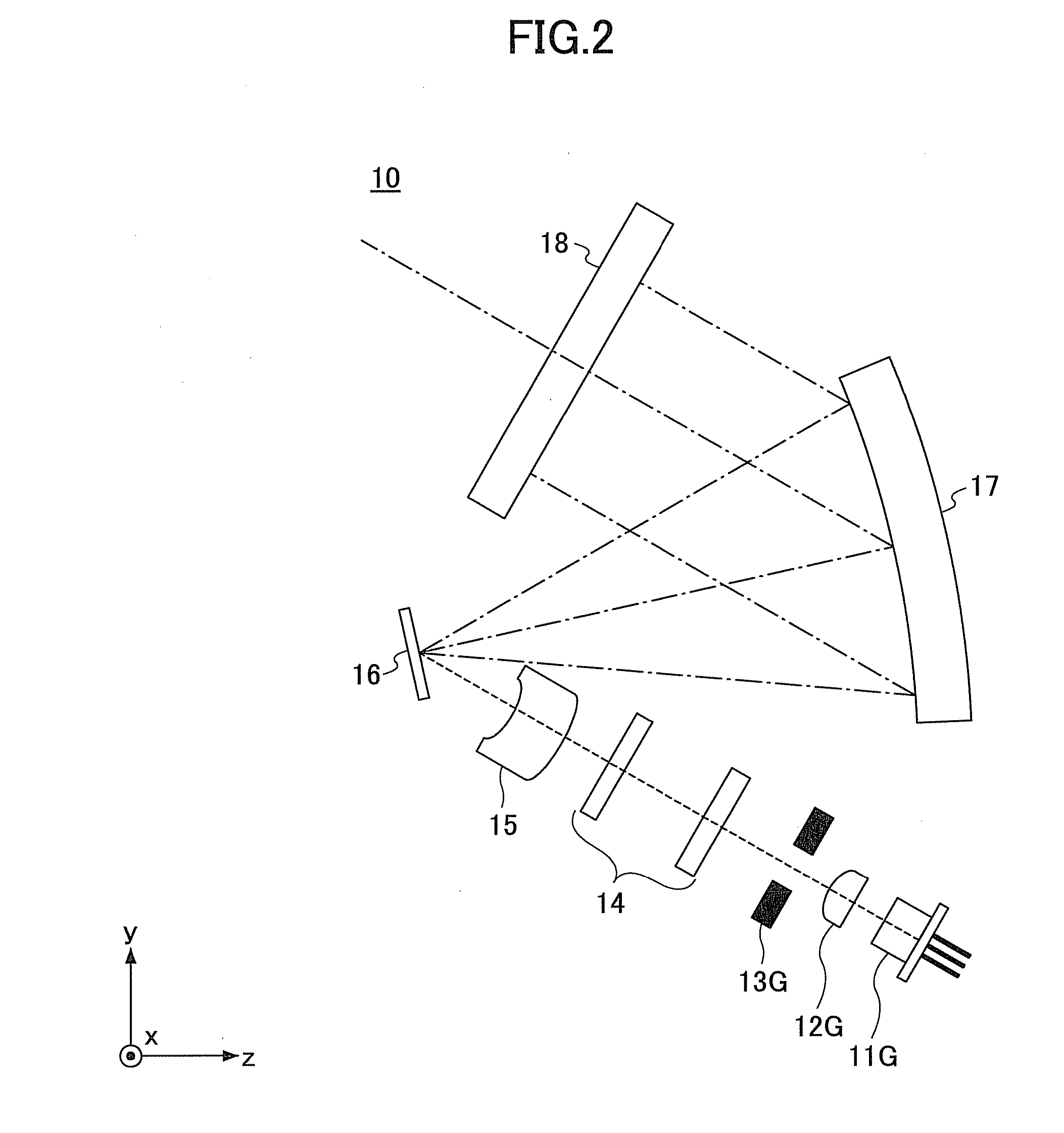Image forming apparatus and vehicle on which the image forming apparatus is mounted
- Summary
- Abstract
- Description
- Claims
- Application Information
AI Technical Summary
Benefits of technology
Problems solved by technology
Method used
Image
Examples
first embodiment
Modified Example of First Embodiment
[0074]In the modified example of the first embodiment, the arrangement of optical elements in an optical scanning device is different from that of the optical scanning device 10 of the first embodiment. In the modified example of the first embodiment, like components are denoted with like reference numerals as those of the first embodiment and are not further described.
[0075]FIG. 8 is a schematic diagram illustrating an optical path of an optical scanning device 10A according to the modified example of the first embodiment. More specifically, FIG. 8 illustrates the optical path of the optical scanning device 10A viewed from the same direction as FIG. 3. Similar to FIG. 3, the optical deflector 16, the concave mirror 17, and the target scanning surface 18 are not illustrated in FIG. 8 for the sake of convenience. In the optical scanning device 10A, the arrangement of the optical deflector 16, the concave mirror 17, and the target scanning surface 1...
first example
[0080]FIG. 9 is a schematic diagram illustrating an optical system according to the first example. As illustrated in FIG. 9, a convex mirror is used as the first mirror 21, a concave mirror is used as the second mirror 22, and a half mirror having a flat reflection surface is used as the half mirror 23 in the first example.
[0081]In the first example, although the light beams transmitted from the target scanning surface 18 are incident on the first mirror (convex mirror) 21, the first mirror 21 increases the radiation angle of the incident light beams. Thereby, the length of the optical paths in the image forming apparatus can be shortened.
[0082]In order to allow a driver of the vehicle 100 to view the enlarged virtual image 25, a final power surface is to have enough power to converge multiple light beams. Because the half mirror 23 of the first example has a flat surface, a concave mirror is to be used as the second mirror 22, so that the entire projection optical system can have a...
second example
[0085]FIG. 10 is a schematic diagram illustrating an optical system according to the second example. As illustrated in FIG. 10, a convex mirror is used as the first mirror 21, a flat mirror is used as the second mirror 22, and a half mirror having a concave reflection surface is used as the half mirror in the second example. In the second example, although the reflection surface of the half mirror 23 is a concave surface, a surface of the half mirror 23 opposite to the reflection surface is substantially parallel to the reflection surface. In other words, the thickness of the half mirror 23 is substantially uniform.
[0086]In the second example, the convex surface of the first mirror 21 is an anamorphic surface in which a curvature of a predetermined direction is different from a curvature of a direction orthogonal to the predetermined direction. By using an anamorphic surface as the reflection surface of the first mirror 21, the curved shaped of the convex surface of the first mirror...
PUM
| Property | Measurement | Unit |
|---|---|---|
| Shape | aaaaa | aaaaa |
| Transparency | aaaaa | aaaaa |
Abstract
Description
Claims
Application Information
 Login to View More
Login to View More - R&D
- Intellectual Property
- Life Sciences
- Materials
- Tech Scout
- Unparalleled Data Quality
- Higher Quality Content
- 60% Fewer Hallucinations
Browse by: Latest US Patents, China's latest patents, Technical Efficacy Thesaurus, Application Domain, Technology Topic, Popular Technical Reports.
© 2025 PatSnap. All rights reserved.Legal|Privacy policy|Modern Slavery Act Transparency Statement|Sitemap|About US| Contact US: help@patsnap.com



